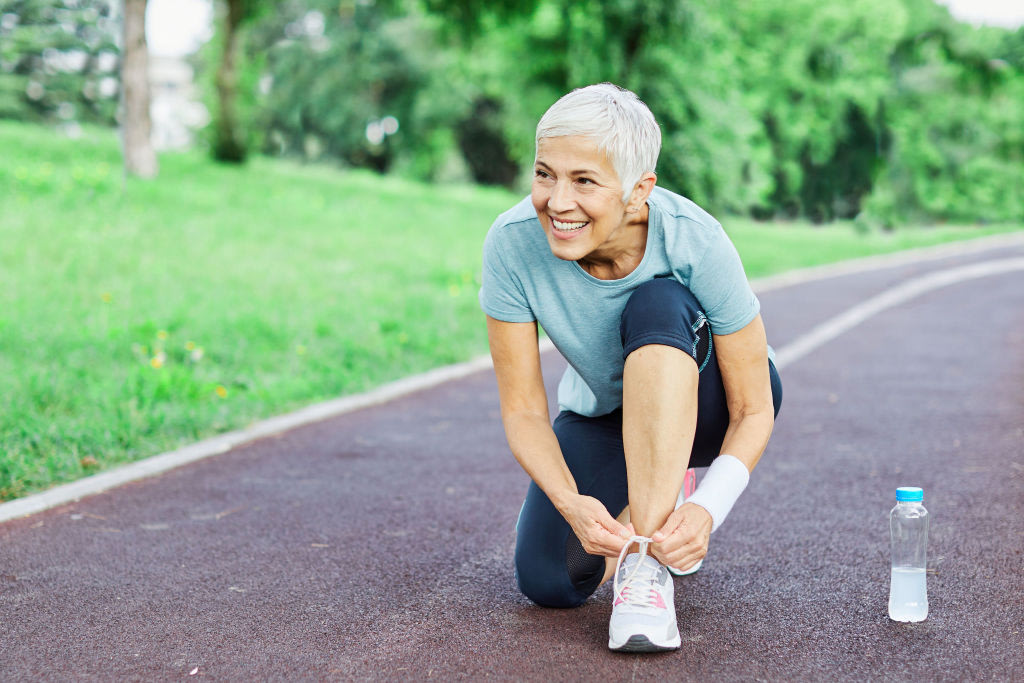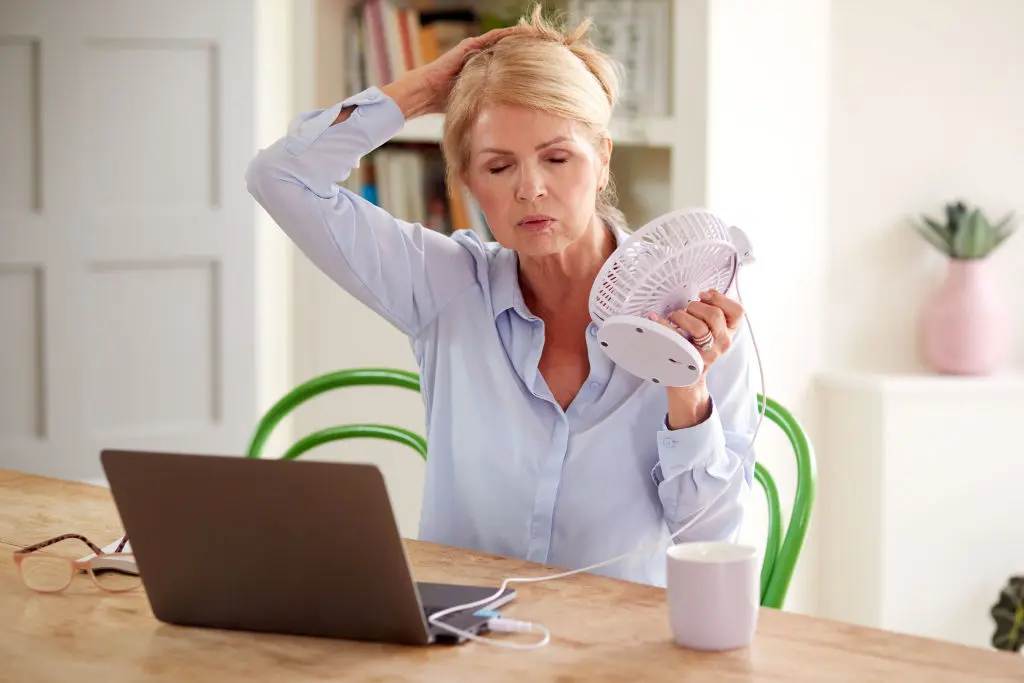Should You Change How You Exercise When You’re Approaching Menopause?

October 5, 2022

Did you know that most women will be postmenopausal for approximately a third of their lives? It’s true! With average life expectancy on the rise (the Australian Bureau of Statistics currently puts it at 85.3 years for women), taking care of your physical and mental health in the lead-up to and after menopause has never been more important.
What is menopause?
Menopause is the time in a woman’s life that marks the end of her menstrual cycle, and is generally defined as the point in time 12 months after a woman’s last period. This happens when a woman’s ovaries no longer have any eggs left to release.
While most women go into menopause naturally (the average age is 51 years), some will experience premature menopause, early menopause or surgical menopause. When a woman goes into menopause will depend on a range of factors and while 51 is the average age, some women will experience it earlier or later in life. The US Office on Women’s Health defines premature menopause as menopause that occurs before the age of 40, while early menopause occurs when a woman is aged between 40 and 45.
According to the Australian Government, women may enter menopause at a younger age than expected due to factors including medical treatments (such as chemotherapy and radiotherapy), surgeries such as an oophorectomy (the removal of a woman’s ovaries) or hysterectomy (the removal of the uterus), primary ovarian insufficiency or even unknown causes.
It’s estimated 2 million women in the US alone enter menopause each year, with millions more beginning perimenopause - the four to eight-year period before menopause when your body starts to produce less estrogen.

Hold up, what is perimenopause?
Perimenopause refers to the stage before a woman’s final menstrual cycle, and can last between four and eight years and lead to a number of physical changes. According to John Hopkins Medicine, during this time your body will release eggs less regularly, become less fertile, have shorter and more irregular menstrual cycles, and produce less estrogen and other hormones.
While each woman’s experience with perimenopause and menopause will be different (and many report no physical changes or may only experience irregular periods), for others, the symptoms can be debilitating.
The North American Menopause Society say symptoms of perimenopause and menopause often include:
Hot flashes: these usually last for one to five minutes and involve a sudden wave of heat and may be accompanied by sweating, reddened skin and a rapid heartbeat. They are frequently followed by a cold chill.
Night sweats: these are hot flashes that interfere with your sleep.
Vaginal atrophy: this is the drying and thinning of vaginal tissue that is caused by a drop in estrogen, and can cause a feeling of vaginal tightness and pain during sex.
Harvard Medical School points to uterine bleeding problems, heavy periods and mood-related symptoms as other common symptoms some women experience during perimenopause.
While Cleveland Clinic says perimenopause is most commonly defined by an unpredictable cycle and you won’t always need a professional diagnosis, they do recommend reaching out to a trusted healthcare provider if you experience blood clots in your menstrual discharge, spotting between periods, vaginal bleeding after sex or emotional symptoms that interfere with your ability to carry out daily tasks.
Can perimenopause and menopause be treated?
Jean Hailes highlights that many women manage their symptoms through their lifestyle choices. These include taking care of your emotional wellbeing, reducing your alcohol intake, giving up smoking, eating healthily and prioritising regular physical activity.
Seeking out treatment will depend on the severity of your symptoms, and your healthcare provider might choose to prescribe treatment or suggest over-the-counter options to help ease your symptoms.
While there’s no treatment that will stop perimenopause (it’s a natural part of life!), Cleveland Clinic says your healthcare provider may recommend hormone therapy, antidepressants, birth control pills, estrogen therapy, gabapentin and vaginal creams to help manage your symptoms. They also recommend lifestyle changes like a healthy diet, light exercise and avoiding food or activities that might trigger hot flashes as a first step.

Are there any long-term health risks?
The symptoms of perimenopause and menopause can have a debilitating impact on a woman’s ability to go about her daily life, with a recent survey of the female workforce within the UK finding almost a fifth of working women experiencing menopause are considering leaving their jobs due to a lack of support for their symptoms.
In addition to common physical symptoms, the NHS acknowledges that menopause can have a negative impact on mental health and it can also put women at greater risk of cardiovascular disease and osteoporosis.
A fact sheet from the National Library of Medicine says women who have gone through menopause are at greater risk of cardiovascular disease, pointing to rates of coronary heart disease that are two to three times higher in those that have reached menopause than women of the same age who have not. They highlight that maintaining a healthy diet and exercising regularly can help to mitigate the risk factors. They also acknowledge the increased risk of osteoporosis, stating that more than 250,000 menopausal and postmenopausal women are impacted by this condition due to estrogen deficiency. In addition to calcium supplements, non-hormonal treatments and stopping smoking, they advise physical activity to help decrease the risk.
Can exercise help?
A 2011 study pointed to exercise being a key part of planning for managing menopause due to its many benefits, including the maintenance of muscle mass, bone mass and strength, the positive impact on your mental health, and cardiovascular benefits.
But what kind of exercise works best? Well, remember all movement is beneficial! Mayo Clinic have highlighted that there are many amazing ways of moving your body that don’t involve a structured workout, like dancing and gardening! They also suggest incorporating a mixture of activities into your routine such as brisk walking, jogging, cycling, swimming or water aerobics, strength training, stretching and balance exercises.
Remember to listen to your body, make necessary modifications, take rest days and avoid overexercising. If you have osteoporosis, the study above also stressed the importance of changing your approach to fitness, cautioning that you should avoid exercises that are high-impact on your bones or have an increased fall risk.
Move your body in a way that suits you
Whether menopause is a long way off, you’re in the middle of perimenopause or you’ve already gone through this significant change, find a way to include movement in your daily life in a way that suits you!

A more empowered you starts with Sweat, and our editorial team is here to bring you the latest fitness tips, trainer recommendations, wellbeing news, nutritional advice, nourishing recipes and free workouts.
* Disclaimer: This blog post is not intended to replace the advice of a medical professional. The above information should not be used to diagnose, treat, or prevent any disease or medical condition. Please consult your doctor before making any changes to your diet, sleep methods, daily activity, or fitness routine. Sweat assumes no responsibility for any personal injury or damage sustained by any recommendations, opinions, or advice given in this article.
Wellbeing